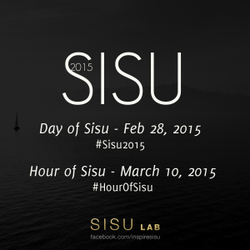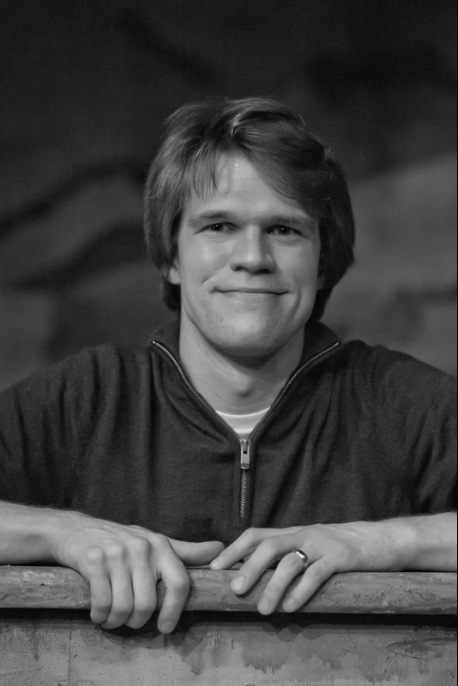Forty seconds before round two, and I’m lying on my back trying to breathe. Pain all through me. Deep breath. Let it go. I won’t be able to lift my shoulder tomorrow, it won’t heal for over a year, but now it pulses, alive, and I feel the air vibrating around me, the stadium shaking with chants, in Mandarin, not for me. My teammates are kneeling above me, looking worried. They rub my arms, my shoulders, my legs. The bell rings. I hear my dad’s voice in the stands, ‘C’mon Josh!’ Gotta get up. I watch my opponent run to the center of the ring. He screams, pounds his chest. The fans explode. They call him Buffalo. Bigger than me, stronger, quick as a cat. But I can take him – if I make it to the middle of the ring without falling over. I have to dig deep, bring it up from somewhere right now. Our wrists touch, the bell rings, and he hits me like a Mack truck. — Joshua Waitzkin
In his book
The Art of Learning,
Joshua Waitzkin describes how he is able to compete, and win, against martial arts competitors much physically stronger than himself by putting his mind into the game. When I asked Waitzkin whether he thinks his mental game is a result of his high intelligence, he
told me,
“I don’t think I have an extraordinary intelligence. Buffalo had cultivated his whole body his whole life, and he had that edge. I had cultivated my mind. My chance lay in making the mental game dominate a physical battle. At a high level of competition, success often hinges on who determines the field and tone of battle.
 One of the first descriptions of mental toughness
One of the first descriptions of mental toughness was made by sports psychologist
James Loeher. Based on his extensive work with elite athletes and coaches, he proposed seven dimensions of mental toughness that he argued are developed: self-confidence, attention control, minimizing negative energy, increasing positive energy, maintaining motivation levels, attitude control, and visual and imagery control.
Following up this work with a more systematic analysis in 2002,
Graham Jones and colleagues interviewed ten international performers (seven males and three females) from a variety of sports. The elite performers were asked to define mental toughness in their own words and describe the central characteristics of mental toughness. The following definition naturally emerged from the interviews:
People who are mentally tough have a psychological edge that enables them to cope better than their opponents with the many demands that sports place on a performer, and they are also more consistent and better than their opponents in remaining determined, focused, confident, and in control under pressure.
The athletes identified 12 key attributes as key to mental toughness in sport, ranked in order of importance:
- Unshakeable self-belief in your ability to achieve competition goals (“Mental toughness is about your self belief and not being shaken from your path. . . . It is producing the goods and having the self belief in your head to produce the goods”).
- Ability to bounce back from performance set-backs as a result of an increased determination to succeed (“Yea, we all have them (setbacks), the mentally tough performer doesn’t let them affect him, he uses them”).
- Unshakeable self-belief that you possess unique qualities and abilities that make you better than your opponents (“I am better than everyone else by a long way because I have something that sets me apart from other performers”).
- Insatiable desire and internalized motives to succeed (“You’ve really got to want it, but you’ve also got to want to do it for yourself. Once you start doing it for anyone else . . . you’re in trouble. You’ve also got to really understand why you’re in it . . . and constantly reminding yourself is vital”).
- Remaining fully focused on the task at hand in the face of competition-specific distractions (“There are inevitable distractions and you just have to be able to focus on what you need to focus on”).
- Regaining psychological control following unexpected, uncontrollable events (comeptition-specific) (“It’s definitely about not getting unsettled by things you didn’t expect or can’t control. You’ve got to be able to switch back into control mode”).
- Pushing back the boundaries of physical and emotional pain, while still maintaining technique and effort under distress during training and competition (“In my sport you have to deal with the physical pain from fatigue, dehydration, and tiredness . . . you are depleting your body of so many different things. It is a question of pushing yourself . . . it’s mind over matter, just trying to hold your technique and perform while under this distress and go beyond your limits”).
- Accepting that competition anxiety is inevitable and knowing that you can cope with it. (“I accept that I’m going to get nervous, particularly when the pressure’s on, but keeping the lid on it and being in control is crucial”).
- Not being adversely affected by other’s good and bad performances (“There have been cases where people have set world records and people have gone out 5 or 6 minutes later, and improved the world record again. The mentally tough performer uses others ‘good performances as a spur rather than say “I can’t go that fast.” They say “well, he is no better than me, so I’m going to go out there and beat that”).
- Thriving on the pressure of competition (“If you are going to achieve anything worthwhile, there is bound to be pressure. Mental toughness is being resilient to and using the competition pressure to get the best out of yourself”).
- Remaining fully focused in the face of personal life distractions (“Once you’re in the competition, you cannot let you mind wander to other things”; and, “it doesn’t matter what has happened to you, you can’t bring the problem into the performance arena”).
- Switching sport focus on and off as required (“You need to be able to switch it [i.e., focus] on and off, especially between games during a tournament. The mentally tough performer succeeds by having control of the on/off switch”).
In more recent years, a number of studies have attempted to further clarify mental toughness, its dimensions, and its development. In one
large review, Daniel Gucciardi and colleagues argued that the dimensions that comprise mental toughness influence the way we approach and interpret both positive and negative events, which in turn influence performance.
- A desire and motivation to succeed that is insatiable and internalized
- A perceived support network that includes sporting and non-sporting personnel
- Effective use of basic and advanced psychological skills.
Do athletes have higher levels of mental toughness than non-athletes? In a very
recent study, Félix Guillén and Sylvain Laborde compared levels of mental toughness between athletes and non-athletes. Based on the
review by Gucciardi and colleagues, they distilled mental toughness down into four main dimensions:
- Hope: The unshakeable self-belief in one’s ability to achieve competition goals (“I can think of many ways to get out of a jam“).
- Optimism: A general expectancy that good things will happen (“In uncertain times, i usually expect the best“).
- Perseverance: Consistency in achieving one’s goals and not giving up easily when facing adversity of difficulties (“I am often so determined that I continue working long after other people have given up“).
- Resilience: The ability to adapt to challenges in the environment (“I do not dwell on things that I can’t do anything about“).
All four dimensions were significantly related to each other, forming a general factor of mental toughness. Athletes scored much higher than non-athletes on this general mental toughness factor, with a large effect size. What’s more, there was no difference between the type of sport (individual vs. team sports). This is consistent with
prior research suggesting that mental toughness is more a function of environment than domains.
The researchers also found that mental toughness increased with age, also consistent with prior research showing that mental toughness develops through developmental experiences. Finally, the researchers found that athletes with higher levels of mental toughness practiced for longer, on average, than athletes with lower levels of mental toughness.
Beyond Mental Toughness
In Finland there is a phrase– dating back hundreds of years– which refers to extraordinary determination, courage, and resoluteness in the face of extreme adversity. It’s called
Sisu.
Rising superstar
Emilia Lahti, who is about to begin her doctoral studies relating to
Sisu, has
made a good case for why
Sisu is distinguishable from other dimensions of mental toughness, such as perseverance, grit, and resilience. In one large-scale survey, which she conducted as a Masters student in the
Masters of Positive Psychology Program at the University of Pennsylvania, Lahti found that 62% of people surveyed (Finns and Finnish Americans) viewed
Sisu as a powerful psychological strength capacity, rather than the ability to be persistent and stick to a task (34%).
Lahti argues that Sisu contributes to an “action mindset”, a consistent and courageous approach toward challenges that enables individuals to see beyond their present limitations and into what might be. I think Joshua Waitzkin illustrates Sisu in his competition with Bufffalo (described above), as he digs deep into the wellspring of possibility that is not evident from the surface.
Lahti is currently planning further research on the topic in 2014, and I look forward to seeing where her work takes her in her Sisu journey!
Are You Mentally Tough?
It’s time to test your mental toughness! While the true test of mental toughness can only come in the moment of training and competition, the following is a questionnaire that can give you a rough guide to your current levels of mental toughness:
Now add up the items, reverse scoring (5=1, 4=2, 3=3, 2=4, 1=5) the following items: 2, 3, 6, 8, 9, 11, 12, 16, 17.
Interpretation:
High mental toughness= 70-90
Average mental toughness= 58-69
Low mental toughness= 18-57
Acknowledgements: Thanks to Peter Clough for providing me with his mental toughness questionnaire, and for providing me with norms for the scale. Appreciation also goes to Emilia Lahti for her assistance in preparing the section on Sisu. Finally, big thanks to my personal trainer Carolina Araujo for teaching me the meaning of mental toughness.
Source for Mental Toughness Questionnaire: Clough, P., Earle, K., & Sewell, D. (2002). Mental toughness: The concept and its measurement. In I. Cockerill (Ed.), Solutions in sport psychology (pp. 32–46). London: Thomson Learning.



 Print
Print





